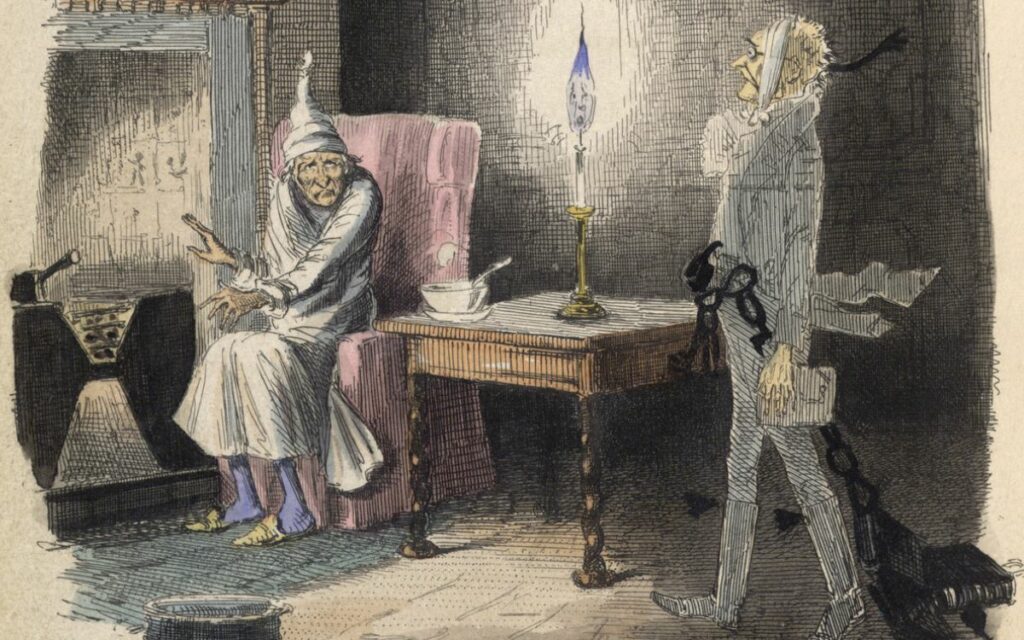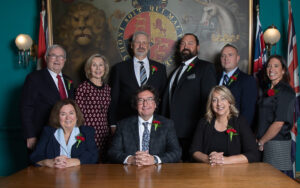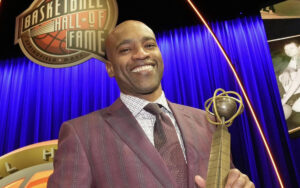
An exploration into the origins and societal influences behind Charles Dickens’ ‘A Christmas Carol,’ revealing the author’s personal experiences and profound societal concerns that shaped this enduring holiday narrative of redemption and compassion. Photo credit: Wikipedia
Over the past few weeks, I have been participating in an online course I enrolled in with Hillsdale College, located in Michigan. Dr. Dwight Lindley has been taking us through the famous novella, A Christmas Carol. In his introduction to the course, Dr. Lindley provided background information I had never heard. I thought a summary report on the professor’s findings would be helpful as many of us prepare to celebrate the holiday and watch our favourite version of Dickens’ celebrated story of redemption.
Did you know that Dickens Charles Dickens wrote his classic tome, A Christmas Carol, in response to his experiences as a young man in Camden Township, a small outpost around London, England? Responding to a report on children’s working conditions in and around the British capitol, Dickens, 31, wrote the treatise in 1843.
While most are familiar with the story, the framework, background, and structure elude most. Dickens wrote the novel in the middle of the Industrial Revolution. Multiple technologies were moving to the cities. The way harvesting, shipping, processing, and producing took place changed the face of England. People who had lived in the countryside now fled to where work existed, transforming Britain into a nation of urban dwellers. As Professor Lindley points out in his in-depth look at the classic tale, many areas of London became slums or shantytowns, and Dickens became obsessed with these places. They populated his novels. He wrote about hard times for children, orphans, and child labour. The Report of The Children’s Employment Commission, 1842, found that these youngsters worked in factories by themselves at ages 8, 10, or 12. The conditions were horrible. A bustling culture rose, but the cost to humanity was uncertain.
These factors touched Dickens, whose lower-middle-class home endured times of oppressive poverty. At age 12, his parents found themselves in debtor’s prison. He had to support himself, but the trauma of this experience marked him and left him sympathetic to the plight of the poor for the rest of his life. As a boy, Dickens spent time in Camden Town, where the Cratchits lived. When he read The Report, he knew he had to respond to it. At first, Dickens wanted to write a non-fiction work to raise awareness and prompt funding. Eventually, he wrote a fiction story to hit hearts and change minds. As Lindley framed it, he thought it would “come down like a sledgehammer.”
While writing the book, he walked the streets of London. In a letter to C.C. Felton, dated 2 January 1844, Dickens wrote, “I would walk about the backstreets of London, fifteen and twenty miles, many a night when all the sober folks had gone to bed.” These visitations filled his mind and imagination with images he could bring to his readers.
Another motivating factor for Dickens was his financial situation. He had already written Nicholas Nickleby, Pickwick Papers, and Oliver Twist. His fame had grown, but he needed to be more flush with cash. He had four children and a fifth on the way. He was supporting his father and others. As a marketing ploy, he designed the book to be a gift. As with my copy, the original publication was a beautiful artifact, gold embossed, yet easily secured for 5 shillings. He enjoyed little profit from the sales, sacrificing his wealth to give to others. He never attained riches as one of the foremost authors of the 19th century.
As a literary piece, A Christmas Carol, written in prose, became a Christmas ghost story. The story had a musical tone with breaks called Staves, a musical staff. Like Christmas music, the story had what Lindley describes as a “troubling darkness” or a “bittersweet light & dark” atmosphere. There is mysteriousness about Christmas, and Dickens wove that into his story. Amid this enigmatical season, beautiful things can happen in the bleak mid-winter. The hauntings come to Scrooge, first with Jacob Marley, his long-dead partner, and then the three ghosts. As the preface suggests, the ghosts intended to haunt pleasantly, though their message bore weighty consequences. As the ghosts haunted Scrooge, the book haunts us and nudges us to reflect and make changes as needed.
In the end, the story relates to conversion. For those of the Christian faith, the change in Scrooge parallels one who repents from a wicked existence to enter into a life devoted to service, Christ, the church, and fellow humans. Written during the Great Awakening in America and religious revival in Great Britain, the story strikes a known quantity. The ghosts visit in the middle of the night. The reality of the events evades Scrooge. Did they happen? Like John, the Apostle of Revelation, the dream-vision brings conversion, delivering the sinner from certain doom to reformed behaviour and the promise of a more meaningful life. A Christmas Carol endures. The story, 180 years in the past, remains relevant. As in 1843, the Christmas message should move us to respond. Beyond social justice, the work reminds us that each of us has an individual need to think of others, especially in light of the season. God’s gift to us in Christ, the blessings we enjoy, and our responsibility to those who occupy our lives compel us to act and do better. The ghosts who visited Scrooge speak to us today. God bless us, everyone!

Dave Redekop is a retired elementary resource teacher who worked part-time at the St. Catharines Courthouse as a Registrar until being appointed Executive Director at Redeemer Bible Church in October 2023. He has worked on political campaigns since high school and attended university in South Carolina for five years, earning a Master’s in American History with a specialization in Civil Rights. Dave loves reading biographies.




















